
Title: 4D Printing: The Future of 3D Printing for Medicine
Plenary Presentation
Prof. Dr. Thomas J Webster
Founder & CSO, Interstellar Therapeutics and Audax Medical, USA
Abstract
While biomaterials research has exploded exponentially over the past several decades, little has changed in terms of medically-approved products. In fact, the thousands of hip implants inserted today are essentially the same as that developed in the 1960s by Sir Charnley. This presentation will highlight some recent advances in biomaterials destined to become (or have been already been) approved by regulatory agencies and incorporated into healthcare. For example, this talk will cover how spinal implants with nanotextured surface features have been implanted into over 20,000 patients to date with no cases of implant failure (no infection, no bone non-unions, no loosening, etc.) whereas the industry standard is 5-10% implant failure. Artificial Intelligence (AI) will also be a focus of this presentation as AI is being used with nanomedicine to further improve disease prevention, detection, and therapy. Specifically, efforts to design implantable sensors that monitor human health, communicate human health to a hand-held device, and respond on-demand to reverse adverse health events will be presented. Research will also be presented concerning how AI is being used to develop nanoscale surface features that inhibit bacteria, limit inflammation, and promote tissue growth on any medical device. Further, commercialization efforts will be reviewed which are using AI to interpret nanoscale temperature profiles to enable hand-held devices to diagnose infection or inflammation after implant surgery by the patient themselves. 3D printed materials which change shape remotely and on-demand after insertion (so called 4D printed materials) will also be covered in which such materials can revolution scoliosis and other disease treatment. In summary, this presentation will cover technologies that hopefully will allow us to finally move beyond implants originally discovered last century and are still being used this century.
Biography
Thomas J. Webster’s (H index: 124; Google Scholar) degrees are in chemical engineering from the University of Pittsburgh (B.S., 1995; USA) and in biomedical engineering from RPI (Ph.D., 2000; USA). He has served as a professor at Purdue (2000-2005), Brown (2005-2012), and Northeastern (2012-2021; serving as Chemical Engineering Department Chair from 2012 - 2019) Universities and has formed over a dozen companies who have numerous FDA approved medical products currently improving human health in over 20,000 patients. His technology is also being used in commercial products to improve sustainability and renewable energy. He is currently helping those companies and serves as a professor at Brown University, Saveetha University, Vellore Institute of Technology, UFPI, and others. Dr. Webster has numerous awards including: 2020, World Top 2% Scientist by Citations (PLOS); 2020, SCOPUS Highly Cited Research (Top 1% Materials Science and Mixed Fields); 2021, Clarivate Top 0.1% Most Influential Researchers (Pharmacology and Toxicology); 2022, Best Materials Science Scientist by Citations (Research.com); and is a fellow of over 8 societies. Prof. Webster is a former President of the U.S. Society For Biomaterials and has over 1,350 publications to his credit with over 55,000 citations. He was recently nominated for the Nobel Prize in Chemistry.
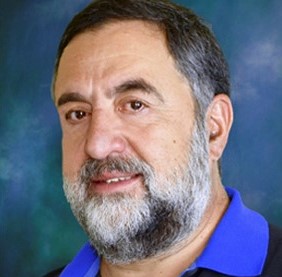
Title: Conquering the Challenges in Simulating Lattice Structures
Plenary Presentation
Dr. Andreas Vlahinos
CTO of Advanced Engineering Solutions, USA
Abstract
The world of additive manufacturing is constantly evolving, and we are fortunate to witness its growth with new machines, faster processes, and an abundance of new materials. Design practitioners are now enabled to unleash the full potential of AM using Generative Design and Lattice structures.
Lattice structures are topologically ordered, three-dimensional, open-celled structures used by nature. Lattice structures are observed in insects, birds, bones, and plants. Lattice structures are very effective for lightweight structural panels, energy absorption devices, thermal insulation, high-performance heat exchangers, ballistic protection, and porous implants.
The complexity of beam lattices makes it necessary to use multiple tetrahedron finite elements to describe a single-unit lattice cell. This creates a significant challenge in simulating components with large amounts of beam lattice structures.
Minimal surfaces like Gyroids, Schwarz, Lidinoid, Diamond, SplitP, and Neovius have exceptional strength, heat transfer, and manufacturability properties. However, the simulation process is challenging because these minimal surface geometries are not typical B-Rep geometry. Instead, they are generated using implicit or voxel-based modelers.
This presentation will demonstrate methods to overcome these challenges.
Biography
Dr. Andreas Vlahinos is the CTO of Advanced Engineering Solutions. Andreas has concentrated on DfAM, Computer Aided Innovation, Generative Design, Lattice Structures, and Simple Solutions to Complex Problems. He has been instrumental in rapid product development through the implementation of Computer Aided Engineering for several Government agencies such as NASA, NREL, SANDIA, DOE, NCDMM, and US Army Aviation & Missile Command and several industry partners such as SpaceX, Lockheed Martin, General Dynamics, United Launch Alliance, Rafael Defense Systems, NAVISTAR Defense, etc. He has been a Professor of structural engineering at the University of Colorado. Several times he received the Professor of the Year Award. He has received the R&D 100 award and several patents. He received his Ph.D. in Engineering Science and Mechanics from the Georgia Institute of Technology. Finally, he is regularly invited as a keynote speaker and panelist on a variety of subjects (Generative Design, Innovation, DfAM, IoT) at international conferences.
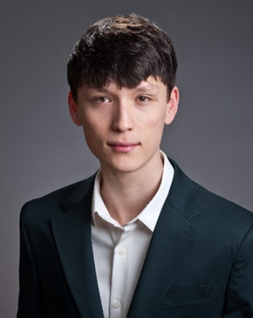
Title: Optimizing the Design of Lattice Structures for Drone Wings
Speaker Presentation
Nicholas Barnych
Designer at Advanced Engineering Solutions, USA
Abstract
In the exploration of lattice unit cells, various options can be considered, including beam, auxetic, 2 ½ D, Triple Periodic Minimal Surfaces (TPMS), and custom cells. These diverse lattice structures offer a spectrum of possibilities for optimizing drone wing designs, aligning with the dual goals of achieving lightweight structures and meeting demanding structural performance criteria.
This presentation aims to illustrate the design optimization process through the example of a drone wing filled with lattice structures. The automated process explores different unit cell options, comparing their performance to determine the most effective one. Once the winning unit cell is identified, its dimensions are optimized to fulfill displacement requirements while minimizing weight through gradient-based optimization. To further refine the design, a simulation-driven approach is employed. This involves assigning variable thickness, diameter, or cell density based on Von Mises stress results. The presentation will delve into this simulation-driven approach, showcasing how it contributes to enhancing the overall design by fine-tuning various parameters.
Biography
Nic is currently a designer with Advanced Engineering Solutions focusing on generating parametric solid models of complex geometries with beam, 2 ½ D, TPMS, and custom lattice structures. Nic has a B.S. from Florida State University and Certificate in “Design for Additive Manufacturing within the Creo Parametric environment”.

Title: Effects of pre-injury oral anticoagulants use in elderly patients with mild traumatic brain injury: A systematic review and meta-analysis
Keynote Presentation
Dr. Brandon Lucke-Wold
Vice President of the UF House Staff Council, USA
Abstract
Background: Most cases of TBI in the elderly occur due to falls. As the incidence of TBI increases in the elderly population taking anticoagulants for various comorbidities, the need to better understand the safety of new anticoagulants and how to manage anticoagulant TBI patients also increases. In the current systematic review and meta-analysis, we aimed to compare the results of using preinjury anticoagulants including DOACs or VKAs in elderly patients experiencing mild TBI.
Materials and methods: A comprehensive search was performed on five databases including PubMed, EMBASE, Google Scholar, Europe PMC, and Cochrane Library to find eligible studies. A meta-analysis using a random-effect model was conducted to compare the effect of preinjury receiving DOACs and VKAs on the outcomes including immediate ICH, delayed ICH, ICH progression, length of stay in hospital and ICU, surgical interventions, and in-hospital mortality in mild TBI elderly patients.
Results: From 1950 studies, we found forty-eight studies with a total sample size of 15117 that met our inclusion criteria. Our meta-analysis revealed there is no difference between patients that used preinjury DOACs or VKAs in terms of ICH progression (pooled OR = 0.74; 95% CI = [0.39; 1.41]; p = 0.36), in-hospital delayed ICH (OR = 0.85; 95% CI = [0.56; 1.29]; p = 0.45), delayed ICH at follow-up (OR = 0.80; 95% CI = [0.20; 3.16]; p = 0.75), ICU length of stay (OR = -0.34;95% CI = [-0.74; 0.07]; p = 0.1), but using DOACs was associated with a lower risk of immediate ICH (pooled OR = 0.55; 95% CI = [0.40; 0.76]; p < 0.01) and neurosurgical interventions (pooled OR = 0.56; 95% CI = [0.40; 0.78]; p < 0.01) compared to VKAs. Moreover, patients on DOACs experienced shorter length of stay in the hospital than patients on VKAs (pooled OR = -0.47; 95% CI = [-0.85; -0.08]; p = 0.02).
Conclusion: According to our findings, there are no differences between DOAC and VKA users in terms of progression ICH after head injury, delayed ICH, mortality, and ICU length of stay, however, we found a lower risk of immediate ICH and surgical interventions, and also a shorter length of stay in hospital in the DOAC group compared to patients receiving preinjury VKAs. These findings may help neurologists and neurosurgeons better manage TBI patients who receive anticoagulants prior to head injury.
Biography
Brandon Lucke-Wold was born and raised in Colorado Springs, CO. He graduated magna cum laude with a BS in Neuroscience and distinction in honors from Baylor University. He completed his MD/PhD, Master’s in Clinical and Translational Research, and the Global Health Track at West Virginia University School of Medicine. His research focus was on traumatic brain injury, neurosurgical simulation, and stroke. At West Virginia University, he also served as a health coach for the Diabetes Prevention and Management program in Morgantown and Charleston, WV, which significantly improved health outcomes for participants. In addition to his research and public health projects, he is a co-founder of the biotechnology company SwiftScience, the pharmaceutical company ProPhos Neuroscience, and was a science advocate on Capitol Hill through the Washington Fellow’s program. He has also served as president of the WVU chapters for the American Association of Pharmaceutical Scientists, Neurosurgery Interest group, and Erlenmeyer Initiative Entrepreneur group. In addition, he has served as vice president for the graduate student neuroscience interest group, Nu Rho Psi Honor Society, and medical students for global health. He was an active member of the Gold Humanism Honor Society and Alpha Omega Alpha Honor Society. He is currently Vice President of the UF House Staff Council, Chair of the Quality Improvement Committee, on the Board of Directors for the Alachua County Medical Society, and active member of Institutional Review Committee and Accreditation Requirements Review Committee. He is married to Noelle Lucke-Wold and has two children. As a family, they enjoy running with their dogs, rock climbing, and traveling. In his spare time, Brandon frequently runs half marathons and 10ks together with is wife. Brandon also enjoys reading, playing piano, discussing philosophy, and playing chess. He is currently a Pgy6 neurosurgery resident at University of Florida with pursuing endovascular enfolded training and was awarded the Dempsey Cerebrovascular Research Fellowship, SNS Fellowship, Van Wagenen Fellowship, R25 Grant, and SNIS Fellowship.

Title: The Mayo Clinic Engineering Perspective: 3D Printing of Medical Device Prototypes for Benchtop Testing at the Point-of-Care
Speaker Presentation
Amy Alexander
Unit head at Mayo Clinic, USA
Abstract
Will be updated soon…
Biography
Amy Alexander is Unit Head of Mechanical Development and Applied Computational Engineering within the Division of Engineering at Mayo Clinic. In this role, she helps to bridge engineering capabilities with the clinical practice and supports a team of designers and engineers. She is past-chair of the Society of Manufacturing Engineers’ Healthcare Additive Manufacturing Advisory Board, a member of the Radiological Society of North America’s 3D Printing Special Interest Group, and frequent co-author and reviewer of medical 3D printing papers. She holds a B.S. in Biomedical Engineering, an M.S. in Engineering Management, and multiple certifications in Additive Manufacturing.

Title: Multifunctional graded scaffolds by fused deposition modeling for the cranio-maxillofacial sector
Plenary Presentation
Prof. Ilaria Cacciotti
University of Rome Niccolò Cusano, Italy
Abstract
Functionalized graded custom made systems, mainly produced by additive manufacturing technologies, are attracting a lot of attention in the craniomaxillofacial sector. Indeed, this approach ensures reduced morbidity, lower infection/inflammation risk, higher aesthetical results, shorter surgery times, better correspondence between the produced implant and the graft site [1,2].
In this framework, the present work reports about the design and production of graded structures by fused deposition modelling (FDM) technique, using different biopolymers (i.e., polylactide acid (PLA), polymethylmethacrylate (PMMA), polycaprolactone (PCL)), and their functionalization, in order to overcome the current limits, i.e. the post surgery inflammation reaction occurrence and the osteointegration lack [3].
FDM printing parameters (i.e. extrusion and bed temperatures, printing speed and flow properly) were properly set up [4,5], and different deposition patterns (i.e. Line, Grid, Gyroids, Concentric, Octet, Triangle, Zig-Zag) were tested. The obtained structures were coated with osteointegrative materials and loaded with suitably selected antibiotic/anti-inflammatory agents. The obtained systems were characterized by infrared spectroscopy (FTIR/ATR), X-ray diffraction (XRD), scanning electron microscopy (SEM), differential scanning calorimetry (DSC), tensile and compression tests. Release kinetics of specific encapsulated biomolecules was performed, the cytotoxicity was assessed by MTT assay, and osteoblastic differentiation capability evaluated by in vitro cell tests with preosteoclasts.
Biography
Ilaria Cacciotti is Full Professor of Biomaterials & Tissue Engineering and Materials Science & Technology at University of Rome "Niccolò Cusano". She graduated in Medical Engineering at the University of Rome “Tor Vergata” (Master of Science Award ‘Fondazione Raeli’), completed the Ph.D in Materials Engineering (Ph.D Thesis Award ‘Marco Ramoni 2011, Ph.D Thesis AIMAT Award 2012) and obtained the II Level Master degrees in “Forensic Genetics” and in "Protection against CBRNe events". She is expert in the synthesis/processing/characterisation of biocompatible nanostructured materials, particularly for applications in the biomedical/environmental/agri-food sectors. She is member of the Editorial Board of several international journals, including Applied Science-MDPI, Applied Surface Science Advances-Elsevier, Frontiers in Biomaterials, Open Journal of Materials Science- Bentham Science. For her research activity, she received more than 20 awards, including the L’ORÉAL-UNESCO Italy for Women and Science 2011

Title: 3D Printing Applications that may help you start to “Think outside the cube”
Plenary Presentation
Andrew Allshorn
Owner - Technical Director at 3D-Squared Ltd, UK
Abstract
Explore the vast array of possibilities that 3D printing offers, as it enables you to break free from conventional thinking and venture into uncharted territories. With its limitless applications, 3D printing allows you to unleash your creativity and push the boundaries of innovation, applications and development. Embrace this cutting-edge technology and embark on a journey of discovery, where you can bring your wildest ideas to life and revolutionize the way we perceive the world around us.
The possibilities are endless if you keep bushing boundaries and “Think Outside the Cube !”
Biography
Andrew studied Art and Design at Wolverhampton University, worked as a traditional model maker and in 1993 started his AM career at Liverpool University. He became 3D Systems senior Applications Engineer, introducing AM to various industries globally. Since 2007, he’s run his own businesses, and has participated in several global events. Andrew’s AM global contribution was rewarded in 2016 with an exclusive AMUG DINO Award. He was the European and then Global Ambassador for AMUG before becoming AMUG Vice President from 2019 to 2021. He sits on the AMUK Steering Board, is a member of the Woman in 3D Printing Advisory Board, sits on the TCT Expert Advisory Board and is a Create Education Ambassador. He continues to push the boundaries of AM.
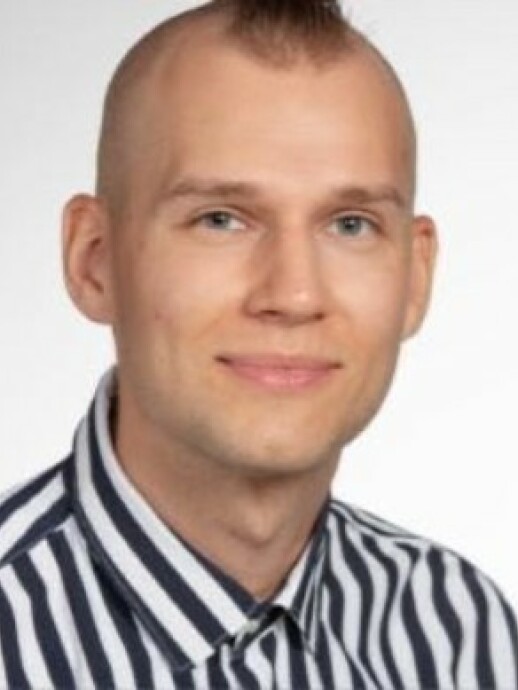
Title: Advanced Manufacturing of Cube Sats in the Metaverse Product Development Lifecycle
Speaker Presentation
Mr. Janne Heilala
University of Turku, Finland
Abstract
The study proposes a novel approach to prolong cube sats' lifecycle development. This research integrates the generalization of advanced computational techniques, machine learning, and optimization methods to simulate and enhance strategies. The spacecraft improves adaptability, precision, and efficiency in the complex orbital realm by employing bioinspired design principles and leveraging reconfigurable intelligent surfaces. The study emphasizes the importance of multi-disciplinary collaboration and continuous improvement in education to tackle manufacturing challenges, uphold quality controls, and enhance safety in aerospace production. Compliance with Part-camo standards and Part-145 regulations governing commercial flight operations with aviation authorities. This research contributes significantly to the field of aerospace engineering by offering scalable and adaptable solutions to mitigate the risks associated with lifecycle compliance, thereby advancing the safety and sustainability of space operations. Through a comprehensive methodology that includes case study analysis and simulation, while previous studies formed the literature review, new science is discussable; this study provides valuable insights into optimizing design principles, emphasizing the role of interdisciplinary innovation in addressing space sustainability challenges on advanced spacecraft technologies integration.
Biography
Janne Heilala has a solid educational foundation, having, on the one hand, earned a Master of Science in Technology with a distinction in Lifecycle Management in 2019 and, on the other hand, with a supportive Master of Arts 2021 in the University of Tampere, Finland. In 2023, he directed his medical equipment research towards additive manufacturing product simulations in aerospace. With a subdued dedication, he initiated his doctoral studies starting in 2021 at the University of Turku, Finland, targeting the advancement of the manufacturing industry.

Title:
Speaker Presentation
Rajeev Kulkarni
3D Systems Corporation, USA
Abstract
Will be updated soon…
Biography
As an accomplished entrepreneur and executive, Rajeev brings extensive leadership experience in the areas of 3D Printing, business strategy, innovation, and entrepreneurship. He thrives at the intersection points where new technologies and their applications converge to solve customer problems. With an impressive tenure of almost three decades at 3D Systems, a prominent provider of 3D printing-centric design-to-manufacturing solutions, Rajeev has played pivotal roles throughout his career. In his recent position within the organization, he spearheaded mergers & acquisitions and strategic corporate development activities. Previously, he contributed significantly in various engineering and business capacities. A true innovator, Rajeev joined 3D Systems in the early '90s, emerging as a core member who played a crucial role in inventing multiple 3D Printing platforms and pioneering the growth of the 3D Printing Industry. His accomplishments include holding multiple US and international patents and receiving numerous "Outstanding Innovation of the Year" awards. Subsequently, he led global R&D for all products, established the entire desktop 3D Printer business, established 3D Systems India, and launched the strategic planning division within the organization. Beyond his corporate contributions, Rajeev is a founding member of the Inception Micro Angel Fund and the Charlotte Angels Fund in Charlotte. These angel funds have invested in seed & Series-A rounds of over 20 technology startups, with Rajeev serving on the boards of several of these ventures. Currently, he plays a key role on the North Carolina Governors’ Entrepreneurship Council, providing guidance to the state government on expanding statewide entrepreneurship. Recognized for his achievements, Rajeev received the "40-Under-40" award from the Charlotte Business Journal in 2009 and the "Movers and Shakers of Charlotte" award from Business Leader Magazine in 2011. Rajeev's educational background is impressive and diverse, holding multiple bachelor’s and master’s degrees in engineering, computer science, and marketing. He actively participates on the boards of various incubators, angel funds, and entrepreneurial groups, showcasing his commitment to fostering innovation and growth.
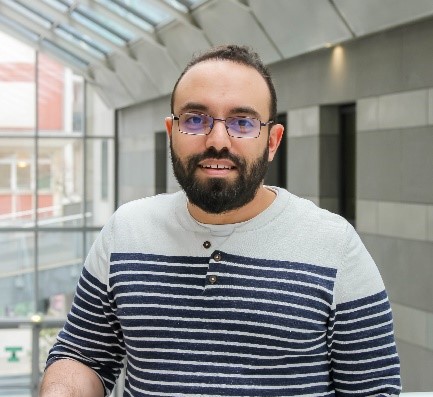
Title: Study of composite polymer degradation by finite element modelling and deep learning approach
Speaker Presentation
Dr. Kheireddin Kadri
Aptiskills & Da Vinci research center, France
Abstract
The high-pressure condition encountered inside hydrogen storage vessel of type 5 [1] imposes to study the degradation of composite material under static pressure. In the present work we expose a promising method. We proposed a coupled approach between finite element method (FEM) and deep learning (DL). The use of a well-designed representative volume element (RVE) [2] was a first step to generate within a law of behaviour of the composite a working database of the strain degradation. This damage of ductile nature is treated as a local anomaly. Artificial neural networks for classification of damage [3], were employed to classify the degree of degradation for each RVE. Strain degradation obtained from computation, is forecasted as a time’s series by recurrent neural networks [4]. Convolutional neural network (CNN) was used to bring insight into the pattern of degradation at early stage [5].
Keywords: Damage law; Behaviour Law; Feature classification; Time’s series; Machine learning; Classification; Artificial neural network.
Biography
Kheireddin Kadri has completed his Phd at the Laboratory of Processes and Engineering in Mechanics and Materials (Paris, France) at HESAM University at Paris, France. He has been working as a post-doctoral at De Vinci Research Center Paris, performing his research in the Modeling group laboratory since 2021. His team work research is focusing on multi-scale modelling of composite materials, by applying a new approach based on machine learning and artificial intelligence. He has been serving as jury for the title of Developer in Artificial Intelligence at the French network of digital factories SIMPLON.
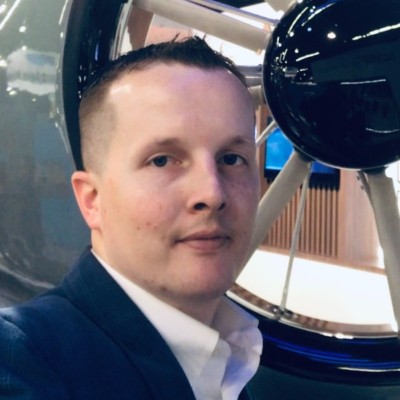
Title: New Techniques, Technologies and Materials for Additive Manufacturing along with the proliferation of AM into mainstream manufacturing. The keys to driving successful adoption
Speaker Presentation
Jim Monroe
Vice President at Space Factory, USA
Abstract
Will be updated soon...
Biography
Will be updated soon...

Title: Grain Refinement Techniques in Wire Arc Additive Manufacturing for Large Deposits
Keynote Presentation
Dr. Murali Mohan Cheepu
Research Manager, South Korea
Abstract
The increasing demand for 3D printing technology has led to the exploration of various processes for producing components across multiple applications. Each 3D printing method possesses unique capabilities and specialties. However, with the rapid production of components come significant challenges. Wire arc additive manufacturing stands out as a process suitable for large-scale component production due to its comparatively higher deposition rates. Nevertheless, these large deposits often encounter issues, particularly concerning microstructural and mechanical properties of certain materials. The formation of columnar grains or anisotropic properties in deposited products emerges as a major concern. Given the necessity to maintain high production rates to meet demand, efforts are required to achieve equiaxed grains or isotropic properties. This abstract discusses feasible techniques for obtaining isotropic properties or grain refinement in large deposits characterized by columnar grains. The performance of these techniques is evaluated in terms of the mechanical and microstructural properties of large-scale components manufactured via wire arc additive manufacturing.
Biography
Dr. Murali Mohan Cheepu is a research manager at STARWELDS Inc. He has over ten years of experience in the manufacturing and research industries. His research focuses on welding and joining, additive manufacturing, automation, digitalization and artificial intelligence. In addition, he is doing research on a novel Super-TIG welding process to increase productivity. Cheepu has won a number of awards, such as best researcher award from KWJS, trusted reviewer from the Institute of Physics in the UK, and outstanding young manufacturing engineer award from the SME, USA. He serves on the editorial board, reviewer, conference chair and technical committee member. Cheepu has written several peer-reviewed articles, welding research supplement articles in the American Welding Society and patents. Cheepu has a master's degree in welding engineering from the NIT Tiruchirappalli and a doctorate in mechatronics engineering from Kyungsung University.
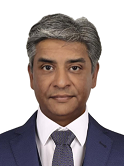
Title: Unlocking Supply Chain Potential: The disruptive Impact of 3D Printing
Keynote Presentation
Rajesh Mrithyunjayan
Vice President - 3D Products & Solutions at 3D Monotech, India
Abstract
Two dimensional (2D) materials with exceptional characteristics makes it highly desirable candidate for potential applications. Its large surface area, quantum confinement effect, thermal and chemical stability, mechanical strength, and optical properties make it a unique and versatile material. Two dimensional materials are the ones that have two dimensions outside of the nanometric size range and third dimension in the atomic-scale (nanometre range). Graphene, Hexagonal Boron nitride, Molybdenum disulphide, Transition metal oxides, etc belong to this category of two dimensional material. Recent advancements in 2D materials allow for the manipulation of its bandgap, enabling improved performance in electrochemical systems, thereby opening doors to novel energy generation methods and 3D printing. By modifying the surface of 2D nanostructures and incorporating them into polymer matrices, various material characteristics can be improved, addressing challenges such as contamination and thermal deformation. The work reviews recent developments in this field, providing insights into future prospects and challenges. It aims to enhance understanding of 2D material characteristics and utilization in the context of energy applications, including its electronic applications and additive manufacturing.
Biography
Rajesh Mrithyunjayan is the “ Vice President 3D Products & Solutions" for Monotech Systems Ltd. based out of Chennai . Core Responsibility : Building and Managing the 3D Division of Monotech, which consists of 1) 3D Monotech - Involved in sales and service of 3D Printers & 3D Scanners sales 2) Metamorph 3D - Involved in Providing 3D Printed Parts, 3D Scanning, Reverse Engineering and 3D Design for Govt/Public/Private industries and Research Institutions 3) Metaform 3D - Involved in 3D Printer and 3D Scanner R&D and manufacturing of Make in India Equipments. • Total of 25 years experience in Industrial equipment and Capital Equipment sales. • Total of 12+ Years + experience in 3D Printer Sales. • Total of 8+ years Experience in Business Development of 3D Printing Solutions. Key Highlights in 3D Printing Business :- 1. 3D Printing Business : 12 years of Exposure in global 3d printing technologies. 2. OEM’s : Developed and maintained strong Business ties for Monotech with Leading 3d printer brands like 3D Systems , Bigrep, Markforged, W2P , Procusini , 3devo , Thor, Meltio, Rangevision, XJet 3. Global Experience : Traveled to various expos & OEM facilities in Europe ( Germany , Italy , Austria, Spain ), US , Asia , China etc .. And developed a good understanding of various 3d printing technologies through interaction with manufacturers. Attended OEM workshops and training sessions w.r.t applications and ‘Go to Market’ strategy. 4. Application Experience : Carried out Research in Casting Industries w.r.t 3D Printing suitability. Successfully sold Wax 3d printers in Investment casting industries. Replaced Traditional patterns with 3d printed patterns in the large OEMS and sand-casting industry. 5. Technical Knowledge : Have exposure to all 3d printing technologies in plastic, Wax and metal applications. Have OEM training on 3d printing technologies and applications. : Have been invited and participated in symposiums and Events pan india organised by various IIT’s and other recognised universities and presented about Additive Manfacturing with Polymers, wax, metals and ceramics. 6. R&D - Setup in-house R&D facility within 3D Monotech and have developed commercial 3D Photogrammetry system and Metaform 3D Printer which is used for inhouse and research purposes with large build platform size. - Working on Composite Materials for 3D Printing for End use parts in polymers to replace metals in manufacturing techniques - Working on Ceramic 3d printing for dental and medical implant applications.
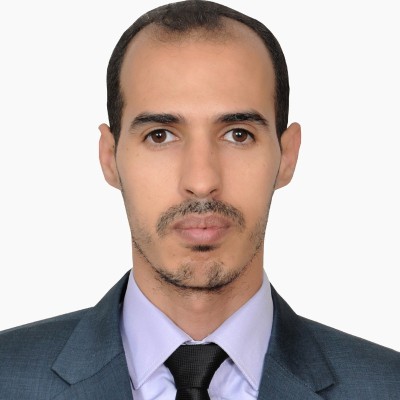
Title: Design considerations and strategies for FDM additive manufacturing technology
Speaker Presentation
Dr. Aissa Ouballouch
Assistant Professor at University of Hassan II Casablanca, Morocco
Abstract
Additive manufacturing (AM) is a powerful technology that lends itself to creating complex geometries, and building parts in short timeframes. Additive manufacturing techniques such as Fused deposition modeling (FDM) 3D printing are capable of printing shapes that cannot be created by any other means. One of the most salient factors in successfully building these unique designs is the utilization of support material and the consideration of some design specifies linked to the used process, the geometry and material part. However, 3D-printed end use parts and prototypes do not come off of the printer “customer-ready.” Virtually every printed part, regardless of print technology, requires some sort of post-printing. Hence, AM technologies face many challenges. In this study, design and manufacturing considerations and strategies, aiming to affect positively efficiencies, cost, post-processing, and support material usage are presented and investigated according to existing literature and diverse FDM specifies. These considerations concern among others geometry, quality, materials. In addition, proposed design for additive manufacturing (DfAM) is illustrated by means of appropriate case studies. This study will assist designers and manufacturers when making decisions to meet functional needs, while ensuring manufacturability in FDM systems. Moreover, many of these strategies can be applied or extended to other AM technologies besides FDM.
Biography
Dr. Aissa Ouballouch received his Engineer degree and Doctorate in Mechanical Engineering at the University of Moulay Ismail (at High national school of arts and crafts) in 2013 and 2021, respectively. Subsequently, he joined the Mechanical Engineering Department at the High school of technology, within the University of hassan II Casablanca as an Assistant Professor. Over the years, Dr. Aissa Ouballouch has developed and taught a wide range of Mechanical Engineering courses such as Introduction to Mechanical calculation, technical drawing, mechanical design, CAD, CAM, FEA, structures calculation, project management, manufacturing processes, design office projects, introduction to programming of CNC machines, additive manufacturing,...On the other hand, he spent many years in various design offices from different sections namely automotive, aircraft, and mechanical & steel construction. Dr. Ouballouch's doctoral research consisted of characterizing, modeling and designing 3D printed parts obtained by additive manufacturing technologies, in particular fused deposition modeling technique. Presently, Dr. Ouballouch's primary research interest lies in the field of design and simulation of 3D printed components. Furthermore, Dr. Ouballouch’s research focuses on customizing and developing distinct and advanced techniques used for design and simulation of mechanical parts and systems to leverage the potential and capabilities of additive manufacturing.

Title:
Speaker Presentation
Alberto Bejarano
Msc. Pontifical Catholic University of Peru, Peru
Abstract
Will be updated soon…
Biography
Experienced Mechanical Engineer and Machine Design graduate with a passion for materials and welding engineering. Extensive academic and teaching experience in Colombia and Peru, specializing in industrial inspection, supervision, and consultancy. Continuously committed to professional development, participating in international projects such as Research 900 at the Canadian Center for Welding and Joining. Presented at various conferences and seminars in Brazil, Colombia, Peru, Mexico, the Netherlands, and India. Strong belief in the integration of theoretical advancements and practical industry application. Holds a Master's degree in Welding Engineering from the Pontifical Catholic University of Peru (PUCP) and certifications as an International Welding Engineer, European Welding Engineer, and International Coordinator in Metal Additive Manufacturing by the European Welding Federation.
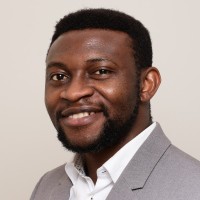
Title: Leap-frogging Manufacturing for Africa: Possible Business Models
Speaker Presentation
Ikechukwu Charles Okoli
Research Associate at The University of Kiel, UK
Abstract
This study provides a model to enable the introduction and scaling of Additive Manufacturing business in development countries. The model addresses much of the current challenges by forging a Public-Private-Partnership (PPP) that delivers value to each party in the partnership by ensuring that critical sectors in a city/country get the benefit of a cost-effective intervention while the government serves the purpose of an assured market for the 3D company and their initial capital requirement. This business model will be supported by an ongoing policy reform to promote 3D manufacturing in the public procurement process as well as grow research partnerships one sector at a time. This paper details the pilot of such a model in Nigeria.
Biography
Ikechukwu Okoli a visionary co-founder of an Additive Manufacturing startup with a distinctive background in economics. He is specialized in economic development and technology adoption. His academic journey has equipped him with a deep understanding of economic systems, market dynamics, and the potential impact of technological advancements on emerging economies. He is commitment to bridging the technological gap in Africa by ensuring that the benefits of Additive Manufacturing are accessible to a broad spectrum of industries. Her startup aims to be a catalyst for economic empowerment, contributing to the realization of a technologically advanced and economically vibrant Africa.
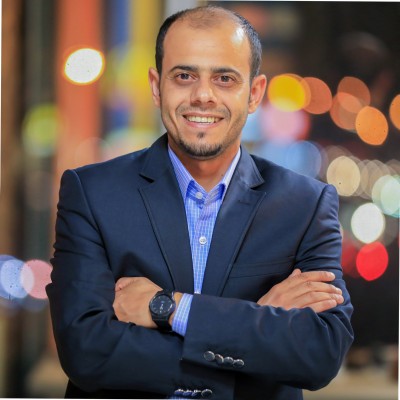
Title: Unlocking Supply Chain Potential: The disruptive Impact of 3D Printing
Speaker Presentation
Mutaz Aletein
Supervisor of CAM and 3Dprinting(AM) at JODDB, Jordan
Abstract
The integration of 3D printing, or additive manufacturing, is reshaping supply chains across industries, offering both opportunities and challenges. Departing from traditional subtractive manufacturing methods, 3D printing constructs objects layer by layer from digital designs, revolutionizing inventory management, production localization, customization, and flexibility. One of its key impacts lies in redefining inventory management practices, shifting towards Just-in-Time production models. This transition minimizes overproduction and obsolescence risks, streamlining operations and optimizing capital allocation. Additionally, 3D printing enables the localization of production facilities closer to end markets, reducing transportation costs and enhancing supply chain resilience. By establishing smaller-scale facilities, companies can mitigate risks associated with geopolitical tensions, natural disasters, or global pandemics, while also responding to local market preferences with greater agility. Moreover, 3D printing empowers consumers by offering highly customizable products tailored to individual preferences. This level of customization fosters consumer engagement and brand loyalty while opening new avenues for innovation. Furthermore, additive manufacturing processes facilitate supply chain flexibility by enabling rapid adaptation to market changes and regulatory requirements. Agile manufacturing processes shorten product development cycles, optimize performance, and reduce assembly complexity. Despite its transformative potential, challenges such as intellectual property protection and regulatory compliance must be addressed for responsible adoption. By embracing 3D printing technologies and navigating associated challenges, businesses can enhance competitiveness, drive sustainable growth, and create value in today's dynamic global marketplace.
Biography
Mutaz Aletein was born in Jordan. He received the B.E. degree in Mechanical engineering from the Hashemite University,jordan, in 2011, and the M.Sc. degree in Business Administration (MBA) from Al Al-Bayt University,, Jordan, in 2017. During his master thesis he was trying to determine the obstacles to the success of SMEs in Jordan that assist and develop small and medium enterprises sector in Jordan. He is researcher at Sunderland university , UK , postgraduate in Engineering Management. In 2012, he joined the Department of R&D, JODDB , as CAM Engineer, since 2017 until now, He is a Unit Head of Digital manufacturing and additive manufacturing , Head of Engineers Entrepreneurs Center RAM at (JEA) (2018 – PRESENT) and 3D Printing Consultant (2018- PRESENT) His current research interests include SMEs, Additive manufacturing (3D Printing), innovation,, management , Leadership and sustainability development. Eng.aletein • Member of association for project management Uk APM • Member of American Society for Testing and Materials ASTM • Member of American Society of Mechanical Engineers ASME • Board member Careers Of Gold • Member of youth advisory group at world bank (2019-present) • Head of Entrepreneurship Committee at (JEA) • Vice-Head of Creativity Committee at (JEA) (2018-present) • Founding member of Mafraq Youth Association (2015- present), • Secretary of the Hussein Cultural Forum (2013-2014) • Member of Jordanian Engineers Association (2011- present) Aletein is motivated, creative, analytical and professional manufacturing engineer, specialized in additive manufacturing technology with international certificates , proficient in ISO certification of processes for internal implementation of workflow. Enjoy solving complex problems, teaching others and demonstrating excellent oral and written communication skills. Alotein is a writer in many E-newspaper and active on social media and TV shows talking about the national and engineering issues.
“ Will be updated soon...”
+91 9491 456 452
7-89-1-18, NVR LAYOUT, Madanapalle, Andhra Pradesh 517325, India
About Us
Global Scientific Guild organizes conferences and webinars to promote quality research and real world impact in an atmosphere of true international co-operation between scientists, doctors, professors, practitioners, engineers and industry by bringing together the world class renowned personalities to discuss the latest developments and innovations at one common platform.